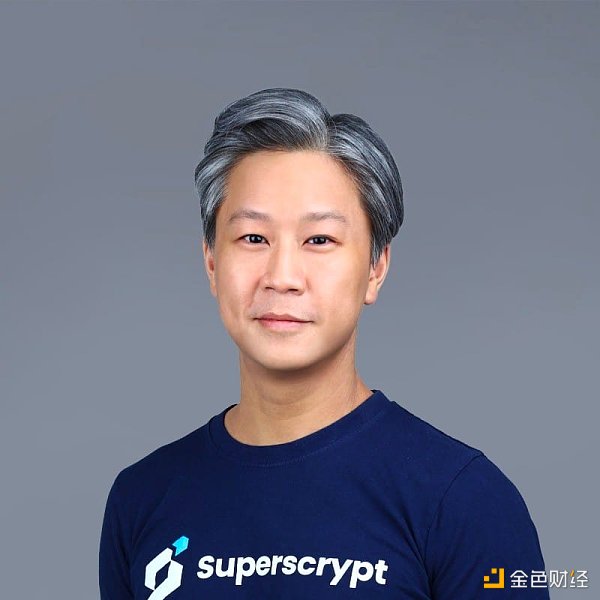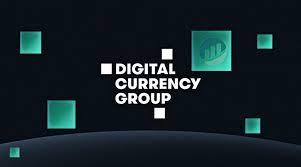Dialogue with Superscrypt Partner of Temasek’s Web3 Fund What details of RWA development have we overlooked apart from speculation?
Dialogue with Superscrypt Partner of Temasek's Web3 Fund What RWA development details have we missed?Author: Marco Manoppo; Translation: Qianwen, ChainCatcher
Jacob Ko is a founding member and partner of Superscrypt, an early Web3 venture fund established by Temasek. Superscrypt is dedicated to investing in and supporting innovative founders and projects throughout the ecosystem. According to the RootData page, the fund primarily focuses on infrastructure, identity and credentials, Web3 services, and emerging use cases. It has invested in projects such as Aptos, Safe, LI.FI, OutDID, and Kaito.
Jacob Ko’s career began at the US management consulting firm Kearney, where he served as a strategic consultant. He later worked at Citigroup Investment Bank from 2010 to 2013. In 2013, he joined Temasek, where he helped establish investment projects in Australia and New Zealand and was responsible for deep tech and agri-tech investments.
In July 2022, he helped create Superscrypt. In addition to providing funding, Superscrypt closely collaborates with portfolio companies to support them in areas such as strategy, product development, GTM, marketing, community technology/developer relations, and recruitment.
- OP Stack + Zero-Knowledge Proof = The ultimate game of Layer 2?
- Cosmoverse 2023 Conference Summary Glimpsing the Development Direction of the Ecosystem from the Latest Roadmap
- Head Warehouse Research Report MMORPG Blockchain Game Big Time

This interview covers the following topics:
-
Superscrypt believes that blockchain technology is the foundation of the new internet. Good infrastructure should “just work” and fade into the background.
-
Many people may not realize that the success of many RWA protocols is largely attributed to their decentralized nature, which enables these protocols to facilitate low-barrier, frictionless transactions. However, platforms handling RWAs must verify legal compliance requirements, which limits direct growth in user base, value, and liquidity.
-
For asset classes that are not tied to physical assets, such as short-term government bonds and private credit, RWA tokenization makes more sense.
-
One area that Web3 needs to explore is identity, reputation, and credentials, which will provide users with greater control over their data.
-
Most investors in cryptocurrencies and venture capital do not fully understand whether a project needs a token. They are primarily focused on short-term price fluctuations that can be achieved through liquidity, rather than building long-term value.
The following is a summary of the interview content:
1. What was the decisive moment that attracted Jacob to the crypto world?
Jacob only started getting involved in cryptocurrencies in 2020. At that time, the global pandemic had led to lockdowns, leaving limited options for entertainment outside of work. He decided it was time to explore and study Bitcoin and Ethereum.
Bitcoin changed his perception of the concept of money, while Ethereum and smart contracts opened up a whole new world of possibilities for anyone connected to the internet. He actively participated in DeFi on Ethereum, Polygon, Binance Smart Chain, and Solana. On Solana, he further explored and engaged with NFTs, participating in multiple community and ecosystem activities.
2. Introduction to Superscrypt? What is its relationship with Temasek?
After several years of accumulation in this field, Jacob turned to full-time encryption work and helped establish Superscrypt, an early Web3 company funded by Temasek.
Superscrypt is research-oriented, focusing on investing in and supporting early Web3 builders to develop protocols, tools, and emerging applications. The team believes that deep user and community engagement is at the core of success and provides practical support to the companies they invest in.
Superscrypt believes that blockchain technology is infrastructure and the pillar of the new Internet. Blockchain can distribute ownership of almost any transaction through distributed ledgers, which is a key innovation. Like most excellent infrastructure, blockchain technology should “only play a role” and fade out of people’s sight. Therefore, they invest in infrastructure solutions to make blockchain more convenient, faster, and cost-effective. At the application layer, they have been looking for high-quality product teams that can create a better life or make users feel interesting.
They believe that an area that urgently needs to be explored is identity, reputation, and credentials. This underdeveloped area is a key unlocking point for web3: solutions built using blockchain technology can give users better control of data, promote product innovation, and create a better overall user experience.
3. What areas and types of projects is Jocob or Superscrypt currently interested in?
Superscrypt invests in Web3 infrastructure that helps blockchain scale, such as Rollup, sequencers, MEV, and interoperability solutions. They also strategically invest in wallets and developer tools because they are the entry points for consumers and developers to interact with blockchain technology and build on it.
As mentioned earlier, identity, reputation, and credential solutions are particularly worth paying attention to. Identity solutions can provide users with contextually richer identity identification based on their activities on the chain and allow users to control the data they want to share.
In terms of emerging use cases, the team chooses to invest in the emerging fields of Web3 social and tokenization of real-world assets. However, these are just preliminary plans, and the team will continue to conduct comprehensive research and monitoring before investing in these areas.
Superscrypt does not invest in the gaming sector. Although this field has vast prospects, it is not the main focus of Superscrypt because it may not be able to select successful enterprises, and successful projects require a large amount of capital investment.
Regarding DeFi, Superscrypt tends to selectively evaluate projects with unique innovative perspectives (such as cross-chain DeFi).
4. What details do people sometimes overlook when dealing with real-world assets?
Jacob observed that as institutions gradually adopt cryptocurrencies, real-world assets (RWA) are being revalued. However, he pointed out that the anticipated widespread institutional adoption of cryptocurrencies has not materialized, possibly due to market crashes hindering institutional participation. Nevertheless, people have recognized that blockchain can bring efficiency to transactions and asset management.
Speculation often accompanies emerging models, and Jacob reminds us that currently, only specific RWAs integrated with blockchain have practical significance due to technological, regulatory, and practical constraints. However, this also presents opportunities for assets such as short-term government bonds and private loans, which are not tied to tangible counterparts and seem more suitable for tokenization.
Many may not realize that the success of many RWA protocols is largely attributed to their decentralized nature, as this characteristic facilitates low-entry, barrier-free seamless transactions. However, for platforms dealing with RWAs, legal compliance requirements must be verified, which limits direct growth in users, value, and liquidity for the platform.
He believes that RWAs should not be hyped as the latest type in the cryptocurrency field but should be evaluated within the fintech field, as this asset class has inherent limitations and different opportunities.
5. What is Jacob’s view on the future of RWA KYC systems?
Jacob expects that future RWA KYC systems will be highly complex. Currently, regulated RWAs seem unlikely to accept privacy-protecting encryption solutions like zkID as KYC standards. Ideally, regulatory agencies would understand and accept these technologies, believing that they can verify personal identities without disclosing excessive details.
However, gaining government trust in these emerging zero-knowledge proof (zk) solutions will face significant obstacles, as authorities may think that if they can directly retrieve personal information under the existing system, there is no need to adopt new technology. Although many teams are researching zero-knowledge proof (ZK) solutions, they have not reached the level where governments consider them standard requirements.
Jacob foresees that identity solutions will continue to evolve. This range may extend from more ambiguous identity verifiers (such as attestations and profiles based on user on-chain activities) to more math-based solutions (like zk technology) and to the most stringent identity solutions (traditional KYC and AML processes).
Depending on the nature of the relevant products, any identity solution can meet regulatory requirements, and the strictest solution can be used for securities, requiring KYC. If regulatory agencies begin to better understand technologies and solutions like zk, these technologies and solutions may be sufficient to meet regulatory requirements. However, given that these technologies are just beginning, achieving this may take several decades.
6. What is Jacob’s view on the best fund structure model for encrypted assets?
Jacob shared his experience of transitioning from traditional venture capital to encrypted investments, emphasizing the unique liquidity of tokens as investment tools. Compared to the 5-10 year cycle of venture capital, the cycle of tokens is much shorter (within a year). This dynamic sometimes leads to early investors focusing only on short-term results, causing price fluctuations and affecting the public’s perception of venture capital.
The currently popular investment structure combines the SAFE (Simple Agreement for Future Equity) used for initial seed rounds with token warrants. This structure aligns with Superscrypt’s long-term investment approach. While the company acknowledges the early liquidity brought by token issuance, its main focus is on supporting teams that can create long-term value, potentially achieving a trade sale or even an IPO.
Regarding investment strategy, Jacob emphasizes the difference between venture capital and liquid funds. The former is a long-term supporter who takes risks for ultimate returns, while the latter requires different skills, focusing more on entry and exit points and liquidity management. Superscrypt mainly focuses on venture capital, but Jacob believes that liquidity strategies are also worth considering, especially in bear markets where significant price drops can create attractive valuation opportunities for top teams and tokens.
Some quick Q&As
What is a book that every aspiring investment professional should read?
Any content that can help establish a solid foundation and framework (about Bitcoin and Ethereum) is worth reading.
What is Jacob’s biggest investment mistake?
It is NFT, but it has also given Jacob a new understanding of cryptocurrency, Web3, and the impact of digital ownership.
What is the most underrated use of cryptocurrency?
It is NFT: Due to frequent speculation activities and price fluctuations, NFTs are not popular at the moment. However, this technology for allocating property rights to intangible assets is a mechanism that can unlock more value creation and new business models.
Do you have any critical views on cryptocurrency now?
Most investors who invest in cryptocurrency and venture capital do not fully understand whether a project needs a token. They are just interested in the short-term price fluctuations that liquid tokens can provide, rather than focusing on the long-term benefits of building something new.
What is the biggest risk faced by the cryptocurrency field?
Lack of regulation.
We will continue to update Blocking; if you have any questions or suggestions, please contact us!
Was this article helpful?
93 out of 132 found this helpful
Related articles
- These DAOs are changing Japan.
- Aside from speculation, how do we understand the core narrative of Ethscriptions, ESC VM?
- a16z Social Media Operation Experience What Did We Do Right to Increase Fans by 100,000 in 1 Year from 0?
- ETHS hits a new high, how sophisticated are the operational methods behind it?
- Current Status and Potential Variables of MakerDAO, the ‘DeFi Veteran
- Can Social Tokens Recreate the Glory of DeFi Summer?
- Interdisciplinary Paper Part 2 Storage Proof, Computation, and Inflation





